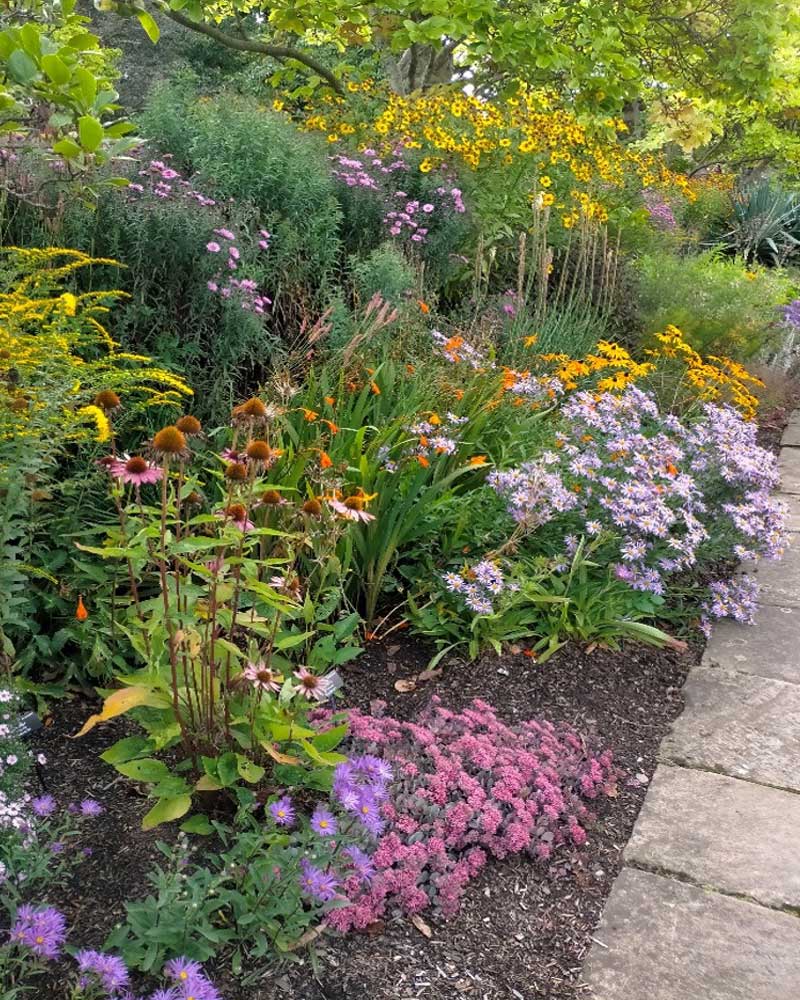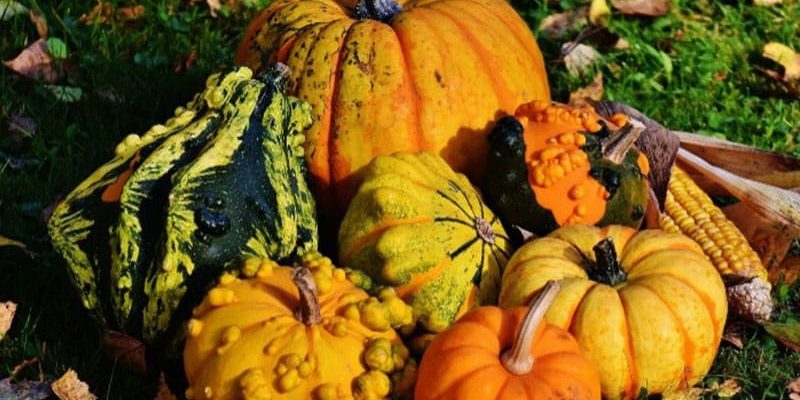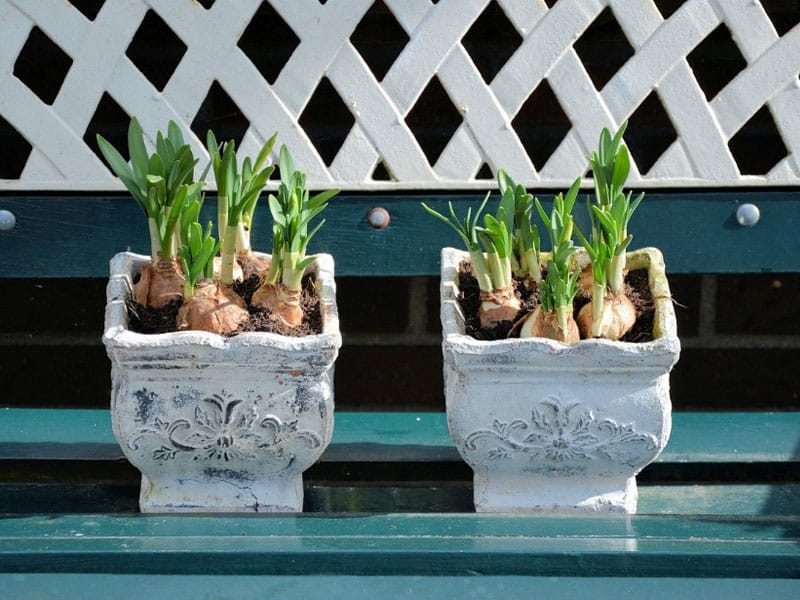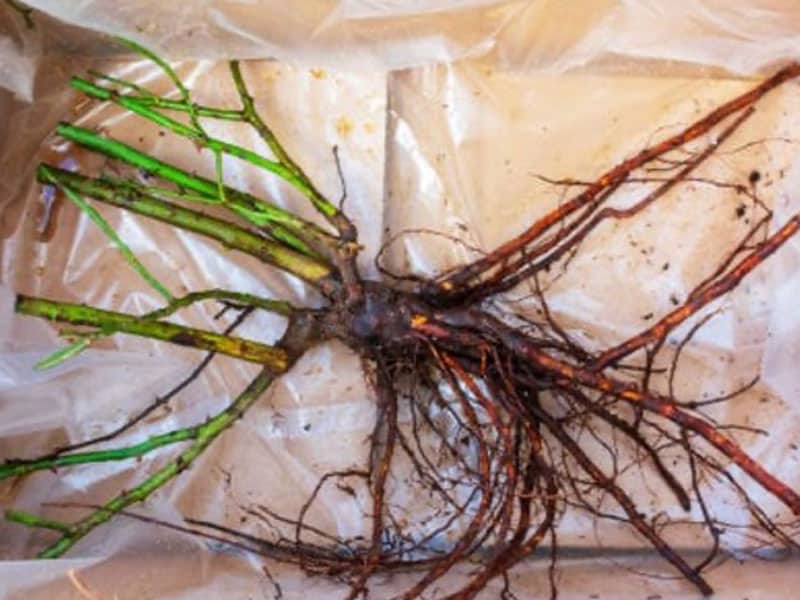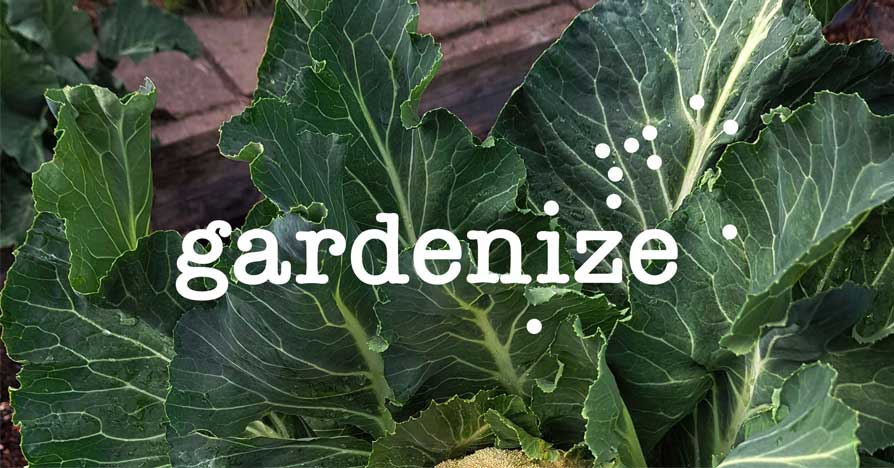October – The best month in the Garden?
Why should October be the best month in the garden? Surely the Spring and Summer months, with all their colour and variety of plants, are the best times of year in the garden?
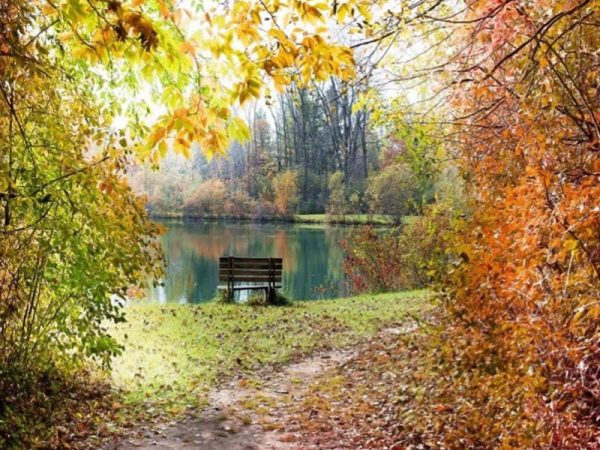
However, October has its advantages: it’s softer, mellower, and less in your face. There is still colour in the garden in October, but it’s also time to plan and plant for next year, so, in a way, you’re straddling two years: the current one, with everything that’s still growing, and the following year that you’re already planning for. And growth is slowing down a bit, so there’s not as much pressure to keep on top of everything and keep things tidy.
The Autumn colours of the trees are often at their best in October. But there are plenty of flowering plants, such as dahlias, rudbeckias, echinacea, heleniums and chrysanthemums that will provide colour until the first frosts. Make sure to deadhead them regularly to keep them coming for as long as possible.
Many of the ornamental grasses, such as Stipa Gigantea and Pennisetum Rubrum are at their best in October and provide a useful design contrast to the flowering plants.
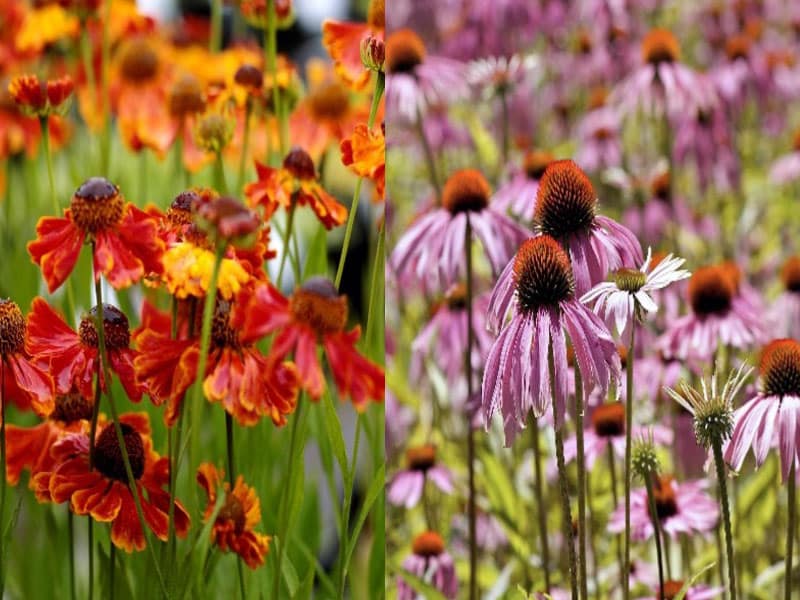
Helenium “Waltraut”, Echinacea Purpurea

And there are Autumn flowering bulbs, such as colchicums and sternbergia lutea, not to mention the saffron crocus (Crocus Sativus) which appear as if from nowhere at a time of year when you’re least expecting to see bulbs growing. If you’re harvesting saffron from crocus sativus, it’s the stigma and styles (called threads) that you need to pick and dry. This should be done mid-morning when the flowers are still closed in order to protect the stigmas inside. It’s a fiddly job and the yield is not huge, so it’s not hard to understand why saffron is the most expensive spice in the world. Apparently, it takes 1,000 saffron flowers to produce just one ounce of saffron!
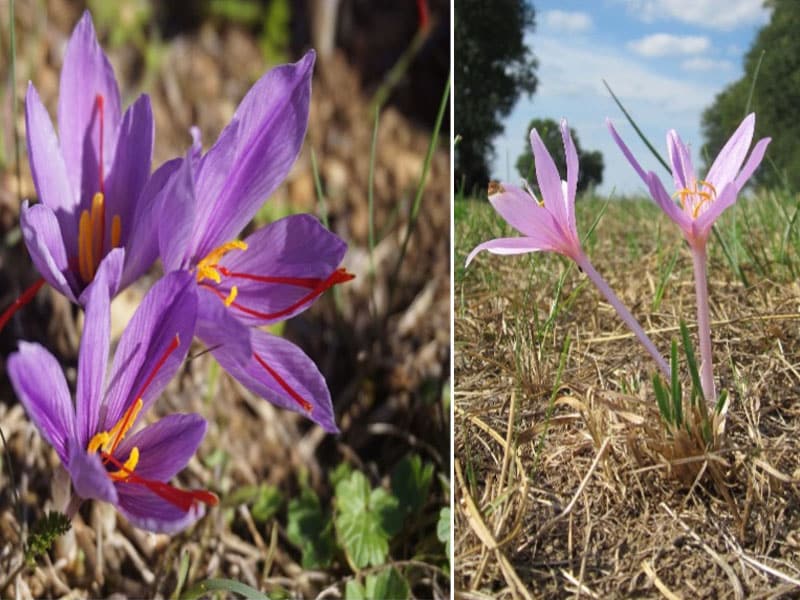
At this time of the year, you have the advantage of being able to see these bulbs in flower at the same time as you’re thinking about planting them, so that you gain an idea of their size and colour, and how much space they’re likely to take up.
GAINING INSPIRATION
When you’re planning a garden and trying to achieve colour at every time of the year, it’s useful to visit other gardens so that you can see what’s in bloom and to keep notes and photographs, perhaps filed under the different seasons. (Gardenize, of course, provides the ideal place in which to store these sources of inspiration!) These can be friends’ gardens, or you can gain inspiration from parks as well as gardens belonging to stately homes or even garden centres. If plants are labelled, it’s a good idea to make a note of their names.
IN THE VEGETABLE GARDEN
In the vegetable garden this is a time of cutting down and tidying up, but there are also crops to be harvested such as pumpkins, beetroot, squash, beans and pears and apples. Many of these will need to be harvested before the first frosts, but some of the hardier vegetables, such as broccoli, kale, Brussels sprouts and leeks, can be left in over the winter. Again, this is a useful time to make note of what went well and what didn’t do quite as well, and to write reminders of what to plant or sow next year.
And, of course, Hallowe’en is at the end of the month, so make sure you have a pumpkin or two ready to make Jack o’ Lanterns!
PLANNING FOR NEXT YEAR
BULBS
The catalogues from bulb companies have been coming through the door for the past couple of months, and garden centres and supermarkets have been selling them, too. It’s been very tempting to buy as many as you can, and to imagine how colourful your garden is going to look next year once they’re planted. If you made a note in the Spring of where you’ve got gaps in the garden, you’ll know exactly where to put them and how many bulbs to plant. If you’re not that well organised (and how many people are?) you’ll probably buy far too many bulbs, but still find homes for them somewhere, even if it’s in the vegetable garden or in pots dotted around the garden.
Spring-flowering bulbs such as daffodils, crocus and hyacinths can be planted in September and October, but with tulips it’s best to wait until November. This is because the colder temperatures can help stop tulip fire disease and other fungal and viral diseases which remain in the soil when it is warmer.
HERBACEOUS PERENNIALS, SHRUBS AND HARDY ANNUALS
Campanula glomerata
Perennials are best planted in either Autumn or in the Spring. The advantage of planting in the Autumn is that plants can grow strong roots during the Winter which will allow them to bloom earlier the following year. As long as the ground is warm enough and not waterlogged, October is an ideal month for planting.
This is also a good time to move plants that are in the wrong place and to divide and replant clumps of herbaceous perennials that have become congested. Many of these plants die down to ground level, so it’s a good idea to insert a marker into the soil to remind you what you’ve planted and where it is.
Bare root rose plant
The same applies to shrubs and to sowing hardy annuals. Bare root shrubs, such as roses, start to become available towards the end of the month. They are cheaper than containerised shrubs and establish better. You could start to prepare the ground for them now by making sure the site is free of weeds and by digging in a layer of well-rotted manure. Plant with bone meal and mulch with manure and compost around the top.
Sweet pea (Lathyrus odoratus)
Many hardy annuals, such as calendulas, cornflowers and eschscholzias can be sown outside in the Autumn if the soil is warm enough and not waterlogged. Sweet peas can be sown in pots and overwintered in a greenhouse or cold frame. These usually make stronger plants that are more robust when they’re planted out in April, but, if you do have failures, you always have the option of sowing more in the Spring.
Many hardy annuals, such as calendulas, cornflowers and eschscholzias can be sown outside in the Autumn if the soil is warm enough and not waterlogged. Sweet peas can be sown in pots and overwintered in a greenhouse or cold frame. These usually make stronger plants that are more robust when they’re planted out in April, but, if you do have failures, you always have the option of sowing more in the Spring.
THE BEST MONTH IN THE GARDEN?

ABOUT THE AUTHOR
Caroline Bowman has been hooked on gardening ever since she grew some thyme from seed and planted it in a window box when she lived in a flat in London. Fifty years later she is still hooked on gardening, but now she lives in Lincolnshire in England where they have quite a big suburban garden as well as an allotment, where they grow fruit and vegetables. Caroline loves flowering plants, in particular, herbaceous perennials and she likes finding out about the more unusual varieties that will do well in the English climate and soil.
GARDENIZE GARDEN APP
A gardening friend with a green thumb and photographic memory
Gardenize is an app for gardening and cultivation that helps you to overview, understand and develop your garden and your gardening skills. Order makes it easier to succeed and Gardenize structures information and photos and makes it searchable for you. You also get tips and inspiration from other Gardenizers around the world. Gardenize is free to use and you can download Gardenize from the App Store or Google Play, or create an account for the Gardenize web app for web browsers.
Get to know Gardenize better here.

